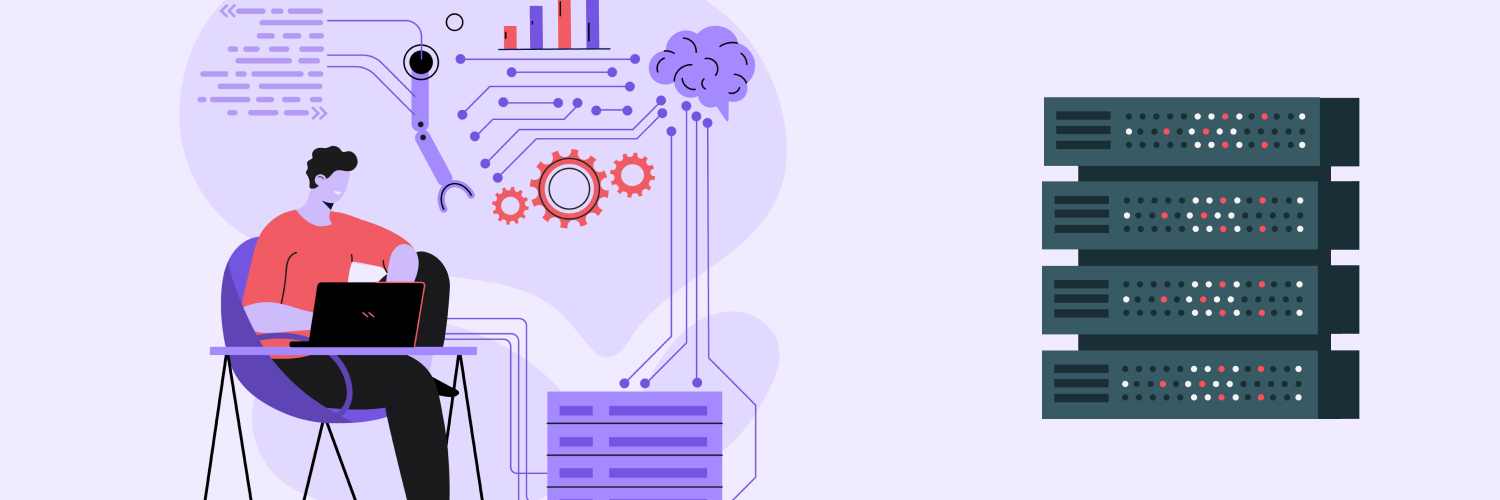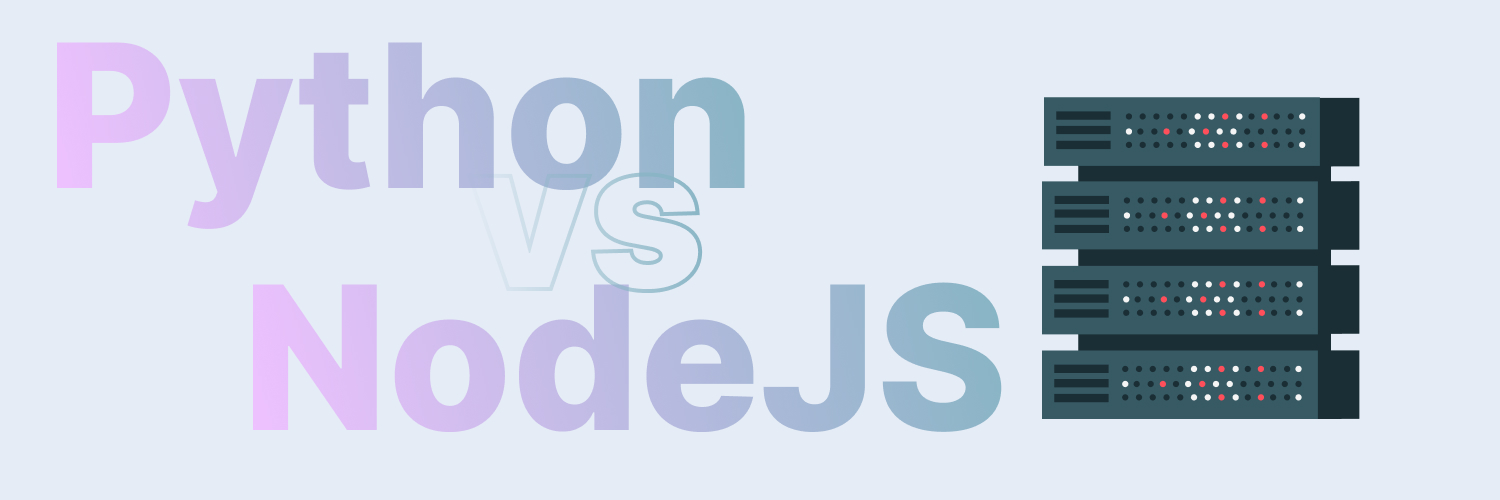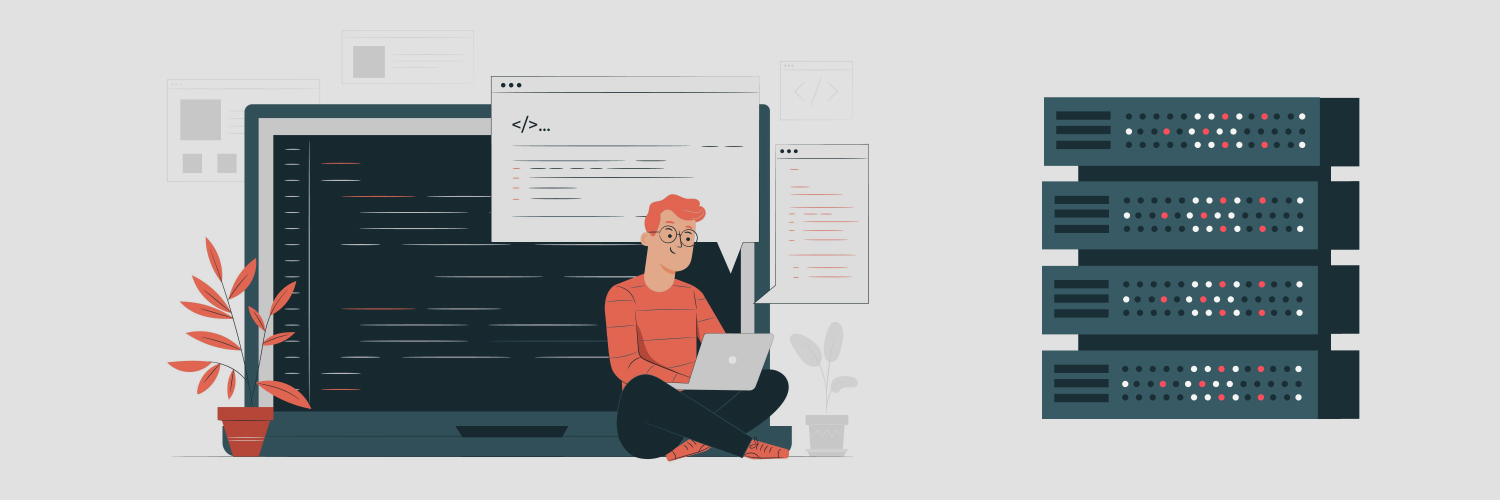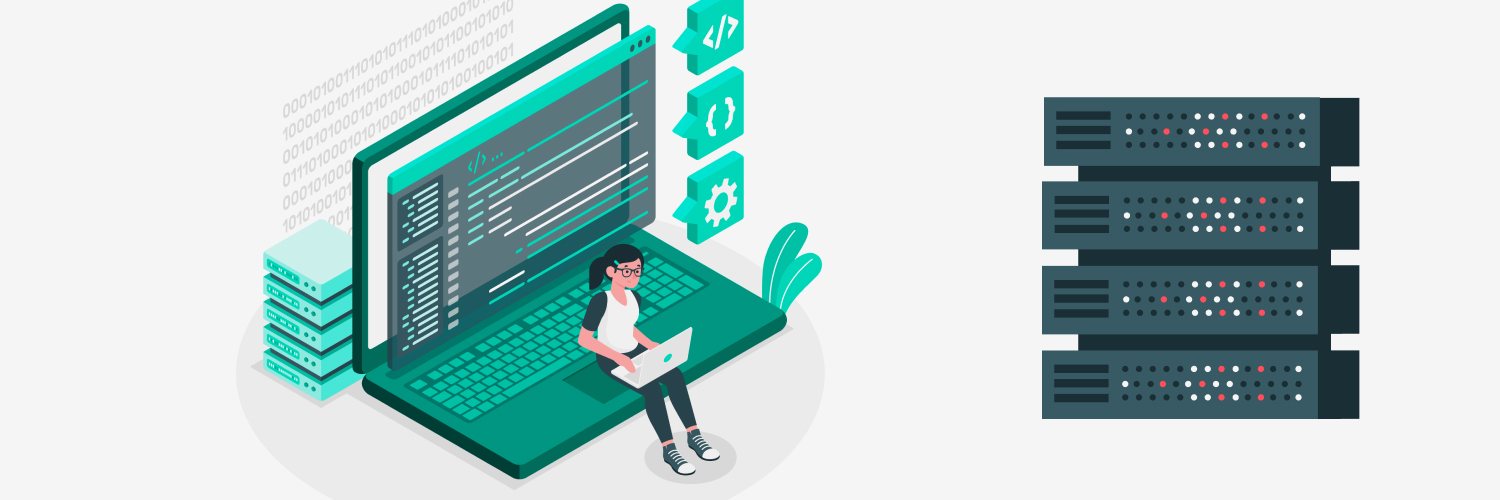The Ultimate Guide To Finding Financial Data Analytics with a Web Scraper and Proxy
Financial data analytics should be a foundational part of every company’s corporate data strategy. Collecting and evaluating the financial data of your own company, your competitors, your industry, and the overall economy is now a standard part of doing business. Not only do successful businesses use data to create value, but the data itself may actually be a company’s most valuable asset.
Combining the traditional data companies have always collected with the enormous amounts of data generated through the Internet of Things and the digital-first nature of everyday activities provides an invaluable resource for companies that can manage it. The biggest issue most businesses face concerning optimizing data use is how to do it on an enterprise-wide scale.
The most effective way to collect data from various sources for analysis is through web scraping. We’ll go into this process in more detail in a later section, but first, let’s talk about what exactly we mean by financial data. If you’re already familiar with financial data and its uses, feel free to use the table of contents to skip around to sections that interest you.
What Is Financial Data?

Financial data includes any data that can be assigned a monetary value. While it obviously includes metrics such as profits, assets, and expenses, it also includes all data related to how people make and spend money.
Financial data can be structured or unstructured. Structured data is clearly defined and searchable, often stored in a database. It’s the type of data you’ll find on a company’s financial statement. It’s usually pretty easy to find and analyze.
Unstructured data is the vast amount of data that isn’t structured. Instead, it’s stored in a wide array of native formats such as social media posts and email messages. Because of the challenges inherent in accessing and categorizing it, unstructured data is much harder to analyze. However, up to 80% of data is unstructured, and it can be a goldmine of information for those willing to wade through it.
We’ll discuss some specific types of data traditionally associated with money. However, it’s crucial to understand that all data related to your company’s ability to operate successfully is financial data.
Financial Data of Public Companies

When people in the finance sector talk about financial data, they’re often referring to the information found in a company’s financial documents, such as their balance sheet, income statement, and cash flow statements. Public companies are required to make this information public, and most large companies have a section of their website devoted to investor relations that includes this information. The SEC also maintains a database of these filings. This type of data is invaluable if you’re considering investing in a company.
Balance sheet
A balance sheet provides an overview of a company’s assets, liabilities, and shareholder equity on a particular date, which is listed on the balance sheet. It also tells you how assets are funded, either with debt or shareholder equity.
Assets
Assets include cash and items such as certificates of deposit and Treasury bills. This also includes inventory and accounts receivable, which is money owed to the company.
Liabilities
Debts are included under liabilities. This includes loans to creditors, outstanding bills for operating expenses, and payable wages. Debt can be either current, such as rent and power bills, or long-term, which are loans with terms over a year.
Shareholder’s equity
Shareholder’s equity refers to the amount of money that would theoretically be split among the shareholders if all the company’s assets were sold and its debts paid. Shareholder’s equity usually lists retained earnings, including previous profits that weren’t paid out to shareholders.
Income statement
A company’s income statement covers a range of time, typically either a quarter or a year. It is also referred to as a profit and loss statement or a statement of revenue and expense. An income statement will include revenue, expenses, net income, and income per share. The net income is a simple calculation of revenue minus expenses.
Revenue
Operating revenue includes income earned by the company’s core business of selling its products or services. Non-operating revenue includes income that falls outside these core business activities. This could consist of interest, rental income (if it’s not a rental business), income from a partnership, or selling advertising space on a building. Other income is revenue earned from other activities such as selling assets.
Expenses
Primary expenses are related directly to carrying out business activities. These can include:
- Cost of goods sold
- Employee wages
- Sales commissions
- Utilities
- Depreciation
- Research and development
Secondary expenses aren’t directly related to business activities such as interest paid on loans or losses from selling an asset.
Comparing income statements over time can give you a lot of insight into whether a company’s revenue is increasing or decreasing and how well they’re controlling expenses.
Cash flow statement
Finally, a cash flow statement shows how a company generates cash to pay its debts, operating expenses, and investments. It gives an overview of where the money comes from and how it’s spent.
It contains three sections that outline how a company spends money:
Operating activities
Operating activities include any cash used to carry out business activities directly. It includes items such as:
- Accounts receivable
- Depreciation
- Inventory
- Accounts payable
- Wages
- Income tax payments
- Interest payments
- Rent
- Cash receipts
Investing activities
Investing activities include sources and cash uses related to investing in its future. This is where you’ll find any changes related to equipment, assets, or investments, including:
- Purchasing assets
- Selling assets
- Loans made or received
- Payments related to mergers and acquisitions
- Purchases of property or equipment
Financing activities
Cash from financing activities relates to money received from banks or investors and cash paid to shareholders, such as:
- Debt issuance
- Equity issuance
- Stock repurchases
- Loans
- Dividends paid
- Debt repayments
Other Types of Financial Data

Financial data isn’t limited to annual reports and financial statements, however. While that data is great for researching stock investments, there’s an ocean of other financial data that can be used for anything from aggregating real estate prices to making strategic business decisions. Some other types of financial data include:
Real estate prices
Even if you’re not looking to buy a home or investment property, real estate prices can tell you a lot about the economy at large. The cost of real estate currently, combined with a historical overview, is affected by many factors, primarily:
- Employment rate
- Inflation rate
- Customer sentiment
- Demographics
- Supply and demand
- Access to amenities
- Location
- Schools
- Environment
- Cost of building materials
- Number of investors in the market
Consumer spending
Every month, the U.S. Census Bureau releases its Retail Sales Report, which is a measure of all sales by retail stores. While this is one primary economic indicator, it’s far too general to give much actionable insight. However, you can do your own research to get more valuable, sometimes surprising, information from consumer spending data. For instance, communities that issued a mask mandate during the pandemic experienced a 5% increase in consumer spending.
Data related to consumer spending can tell you how much people are willing to pay for a certain product and what factors affect that. You can find out how specific features affect the price people are willing to pay. Additionally, consumer spending data can tell you when items are priced too high or too low in specific geographic areas.
Income and wages
Data on how much people are paid can give you insight into how much you should pay employees to remain competitive but maximize profits. Income can be analyzed by several factors such as sex, age, industry, education level, geographic area, and more. Income and wage data is often closely tied to other metrics such as consumer spending, household savings, and real estate prices.
Sentiment related to financial data
Although it’s not quantifiable with a monetary value, analyzing customer sentiment related to financial data provides insight that often directly impacts financial measures. Customer sentiment can be an important economic indicator. While it’s formally measured with the Consumer Confidence Indicator (CCI), many other data points can provide a more nuanced analysis of consumers’ feelings about financial data.
These are just some of the many different types of financial data. There is almost an endless amount of financial data available to collect and analyze to help you make informed business decisions. And there are nearly as many different use cases for financial data extraction.
Use Cases for Financial Data Analytics

When you’re looking at how to analyze financial data, consider the ways that internal and external data can benefit your company. You’re likely already familiar with use cases for internal data, the data your business generates. Like the financial reports discussed above, this data gives you insights into where your company is earning and spending money and how you can do both more efficiently.
External data is the data that’s generated from sources outside of your business, such as your competitors’ data, market research, and customer feedback. These are the types of use cases we’ll discuss since you probably already have measures in place for evaluating internal data.
Investment opportunities
Because having access to “inside information” has always been a critical part of spotting investment opportunities, it should come as no surprise that hedge funds and venture capitalists were early adopters of web scraping. Hedge funds spend two billion dollars on web scraping technology to predict market trends with alternative data sets.
Web scraping gives you the benefit of insider knowledge without the risks of fines and jail time. Web-scraped data can identify underperformance and overperformance metrics well ahead of traditional market indicators. Social media monitoring for customer sentiment is one of the most powerful methods of uncovering opportunities, both to identify emerging markets before they take off and identify investments you should offload before they tank.
Equity research
Equity research allows you to make informed decisions about investing in a company. Aggregating data about a company such as their financial reports, market price, inventory, product price, product reviews, company news, and historical performance gives you a much deeper picture about their value than the one you’ll find on their Investor Relations page.
Product development
Scraping data related to products in your industry can tell you what’s selling and what’s not. By digging deeper, you can also find what consumers want that’s not being offered and what they’re willing to pay for it. Instead of putting a new product on the market and hoping it’s well-received, you can make data-driven decisions to provide customers with products they’re already asking for.
Talent acquisition
Scraping job boards, educational forums, and wage and income data will help inform your strategy for hiring talent. You can be sure your salary and benefit offers are competitive without overpaying. You can also find leads on skilled employees without having to sort through thousands of unqualified applicants who respond to a posted job offer.
Political research
Regardless of which candidate or party you support, there’s no doubt elected officials heavily influence business outcomes. Sometimes they do this in the form of policies that negatively or positively affect your business activities. Sometimes the effects come from people’s reactions rather than any actual policy or law. Either way, understanding how politics can affect your business and taking steps to prepare can only benefit you.
Although there’s no shortage of pundits and research firms willing to chime in with election predictions, in Everybody Lies, Seth Stephens-Davidowitz points out that survey respondents aren’t always truthful. Sometimes lying is deliberate, and sometimes good intentions get abandoned. However, while people may lie, data doesn’t. If most people in a district claim that they’re voting for one candidate, but internet searches for “where to vote” aren’t ranking, it’s a good bet turnout will be low. Making political predictions with big data is too new to have an effective track record, but that doesn’t mean you can’t try it to get an edge over your competition.
Parallel business models
As you’re scraping and analyzing data, you may find that it’s a product in itself. For the reasons outlined above, data is tremendously valuable. And, as you’re no doubt realizing, it’s complicated as well. The time and money you invest in gathering and analyzing data can pay off in many ways. If you’re collecting data for market research, it might be useful to other related businesses that aren’t your direct competition. Selling your scraped finance data and the insights gleaned from it can become an alternative revenue stream.
Where to Get Financial Data

Financial data is everywhere. It’s in formal financial statements and the many digital traces we leave behind as we go about our lives. Once you start looking, you’ll be inundated with possible data sources. Some ideas to get you started include:
- A company’s investor relations page on their website
- Niche trade journal sites
- Industry forums
- Employment sites
- Online retailers
- Financial news sites
- Search engines
- Stock market reporting sites
- Commodity sites
- The SEC’s electronic database
- Foreign exchange sites
- Review sites
- Social media platforms
How to Scrape the Web for Financial Data

Web scraping is the process of retrieving unstructured data from a website and exporting it into a structured format such as a spreadsheet or JSON file through the use of a bot called a web scraper. You tell the scraper what site to scrape and what data you want. When you run the code, it sends a request to the server, and the data is contained in the response the server sends. Finally, the data is exported into the format you choose. The exact method you use will depend on whether you’re scraping a static page or dynamic page.
Static webpages
A static site contains an HTML file for each page. The information on the page is delivered to the user exactly as it’s stored. All sites were built like this in the early days of the internet. Now, this format is most often used to build sites where the content isn’t constantly changing. Scraping data from static pages is a straightforward process:
- Give the scraper the URL of the page you want to scrape.
- Identify the location of the data you want (This can be identified with the Inspect tool in Chrome.)
- Request the data using selectors.
- Export the data into a JSON or CSV file.
Dynamic websites
Dynamic websites have continuously updating feeds, such as websites that deliver stock market data. These sites use Javascript and XML (AJAX) to update the page continuously without constant refreshing. They do this by trading small data packets with the server on the back end. AJAX formatting makes scraping data more complicated since it has to be scraped each time it changes.
To scrape a dynamic page, you have to determine the format and destination of the server request so you can copy it and the response so you can extract it. In Chrome, you can identify the request using the following steps:
- With the Developer Tools panel open, click on Network to find all of the requests processed for the page.
- Under the Headers field, look for Form Data, which should contain the AJAX request.
- Find the parameters that designate the request and the endpoint.
You can find the response format by looking under the Response tab, which should be JSON or something similar. Now that you’ve identified the output parameter and response format, you can configure your web scraper.
Tools for Scraping Financial Data

The two main tools you’ll need to scrape finance data are a web scraper and proxies.
Finance data scraper
Building a simple web scraper isn’t terribly difficult if you know some code. Dynamic scrapers will require more advanced knowledge, particularly real-time scrapers needed to analyze rapid-fire data like you’ll get from stock market sites. However, there’s really no need to reinvent the wheel. Effective web scrapers are plentiful and affordable.
Rayobyte offers Rayobyte’s Web Scraping API if you want to get straight to analyzing your data and not worry about the logistics of collecting it. Rayobyte’s Web Scraping API takes the hassle and headache out of web scraping so you can focus on creating value with your data. We’ll handle all of the pain points of scraping financial data, such as:
- Proxy management and rotation
- Server management
- Browser scalability
- CAPTCHA solving
- Checking for new anti-scraping updates
Financial proxies
Financial proxies let you scrape data without getting sidelined by a website’s anti-scraping measures. Many websites try to block any bot activity to stop their competition from accessing their data and stop any malicious actors. One of the easiest methods for detecting a bot is its activity pattern.
Web scrapers can send thousands of requests per minute, far more than a human ever could. So it’s a safe bet that multiple simultaneous requests originating from the same IP address are coming from the bot. When a website detects this, it immediately blocks the IP address to shut down the bot. If this happens to your scraper, it brings your financial data extraction to a screeching halt.
The best way to avoid this is to use proxies. A proxy IP address hides your real IP address from the website processing your request. It acts as an intermediary between your device and the website. You send your request to the proxy server, and the proxy server replaces your real IP address with a different one and sends your request to the website. The website sends a response back to the proxy, which sends it back to you.
Hiding your real IP address isn’t adequate to avoid bans, however. If you send multiple requests simultaneously from a proxy IP address, the website will ban the proxy IP address instead of your real IP address. The end result is the same: your scraper can’t do its job.
The solution is to use a pool of rotating proxy IP addresses. This method will give you a new proxy with every request your scraper sends. If your scraper sends hundreds or even thousands of requests, each will be sent with a separate IP address. This makes it looks like multiple humans are sending one request instead of one bot sending multiple requests.
Types of Financial Proxies

Now that you understand how proxies work let’s talk about the different types of proxies. There are many different types of proxies and many different ways of classifying them. One of the biggest differences in proxies is where they originate.
Data center proxies
Data center proxies are hosted on servers located in data centers. They’re the most common proxy type available and one of the cheapest. Data center proxies can be used for scraping financial data, but they’re usually not the best option. They do offer some significant advantages, though, so they’re worth discussing.
Advantages
Data center proxies are one of the fastest options available. Although web scraping is an extremely fast process, you’ll be deliberately slowing your scraper down to collect financial data. Because of this, the added speed that data center proxies will give you isn’t critical. Speed is more important in use cases such as gaming, where faster is always better.
Data center proxies give you a lot of anonymity. They hide your location data, and if you use a data center located in another country, it appears as if you’re accessing the website from that country. This can be useful if you’re scraping financial data from a different country and want the results to appear the way they would to someone in that country.
The biggest advantage data center proxies offer is their price. Data center proxies can be generated in huge volumes. They’re one of the cheapest options and might be the best choice if your budget is tight.
Disadvantages
The biggest disadvantage of data center proxies is that it’s easy to identify them as data center proxies. Since most internet users access the internet using residential proxies, data center proxies raise some red flags immediately, even if they don’t act like bots. Some websites completely ban data center proxies. If you’re scraping travel sites or some social media sites, data center proxies will usually be a nonstarter.
Not all sites go so far as to ban all data center IP addresses outright, but will ban entire subnets if they detect bot-like activity from one IP address in it. If you do use data center proxies, make sure your provider has a lot of IP addresses across a variety of subnets so you can get back up quickly after a ban.
At Rayobyte, our data center proxies give fast and superior performance. With over 300,000 data center IP addresses in 27 Countries across nine ASNs and 20,000 unique C-class subnets, we have the diversity you need to replace proxies as soon as they’re banned to avoid downtime. We provide unlimited connections and bandwidth when you use our data center proxies. Additionally, we give you free automatic 30-day replacements and instant individual replacements.
Residential proxies
Residential proxies are issued by internet service providers (ISP) and linked to a physical address. Your IP address at home is a residential IP address. These are hands-down the best option for scraping financial data. It’s impossible to detect a bot based on IP address alone if you’re using a residential IP address. Residential proxies are sourced from actual end-users.
Advantages
The biggest advantage to using residential proxies for finance scraping is their authority. Residential IPs are unlikely to get banned unless they engage in blatant bot behavior such as sending thousands of requests per minute, which you can avoid by using rotating residential proxies.
A rotating pool of proxies lets you send a different IP address with every request. They make your web scraper requests look like they’re coming from human users. Using rotating residential proxies means you’ll have:
- Fewer bans
- Decreased downtime
- Faster scraping
- More data points for analysis
Combining rotating residential IP addresses with ethical scraping practices means you’ll have a high success rate with minimal downtime and few bans while extracting financial data.
Disadvantages
Now that you know the advantages, you should also understand the downsides to residential IP addresses. The biggest disadvantage of residential proxies is that they’re hard to source. This means they’re more expensive and prone to attracting unethical actors, as with anything valuable. In addition to having to pay more for residential proxies, you’ll need to vet your provider carefully.
Some companies steal IP addresses outright and resell them. Other companies don’t go quite this far, but they engage in questionable practices like hiding their terms of service, so end-users don’t understand what they’re agreeing to and make it difficult to revoke consent.
Associating with these types of vendors can tarnish your brand. At best, your partners and customers may question your judgment for choosing to do business with unethical companies. At worst, you could be held legally liable in the event of a class-action lawsuit. It’s not worth the risk.
Rayobyte takes your brand’s reputation as seriously as we do our own. Our sourcing practices are entirely transparent and above-board. We make sure all end-users are financially compensated and give informed consent. They have total control over how and when their IP addresses are used. Our end-users can revoke their consent at any time. We also take steps to ensure that we’re not consuming resources that they need, so we only use their IP address under the following circumstances:
- They aren’t using their device
- Their device is at least 50% charged or plugged in
- They’re connected to WiFi
We are proud of our company and our business practices. Our residential proxies are the perfect solution for modern enterprise customers who need to scrape financial data.
Shared proxies
Shared proxies can be either data center proxies or residential proxies. Shared refers to how many people have access to them. Not all shared proxies are created equal, however. Shared proxies can refer to public proxies accessible to anyone with an internet connection or one other carefully vetted user, called semi-dedicated. Public proxies are always a bad idea.
Although the price (free!) is certainly right, the cost is far too high. Public proxies expose your company to security and legal risks that aren’t worth taking. Because they’re usually overloaded with users, public proxies will slow your scraping to a crawl. And that’s the best thing that can be said about them. Most public proxies use outdated internet protocols that don’t encrypt your data, which is a tremendous cybersecurity risk.
Even if they were secure, public proxies are an inferior product because they don’t work well. You’re likely to get banned due to the “bad neighbor” effect. While you may put effort into scraping ethically and trying to avoid bans, if someone else using the IP address gets banned, so will you.
Sharing proxies can be a viable option in some cases. If you trust your proxy provider to vet other users, sharing a pool of proxies can be a good way to save money. One way to know if your proxy provider vets its users is to see if they vet you. Rayobyte vets all of our customers. There’s no option to directly purchase our residential proxies because we need to know what you’re using them for before we sell them to you.
Proxies have long been associated with underhanded, dark practices. Rayobyte is setting the standard in the industry for the ethical use of proxies. When you use our semi-dedicated proxies, you can be sure the other users have been vetted as carefully as you were.
Dedicated proxies
Dedicated proxies are reserved for your exclusive use. You never have to worry about performance or security issues related to them because you’re the only one using them. They are more expensive, but they’re the gold standard in enterprise use cases for web scraping.
How to Scrape Financial Data Politely and Avoid Bans

Now that you know how to scrape the web for financial data and have the tools, here are some best practices for an ethical web scraper. Though there are some specific details, the overarching goal is to be a good digital citizen and mimic human behavior as much as possible. A web scraper is a powerful tool that can damage web servers by overloading them. This is one reason many websites try to ban them.
Start with the API
Many websites have an Application Programming Interface (API) that provides direct access to their data. Using the API consumes less of the server’s resources. If the data you want is available through the API, use it instead of scraping the site.
Check the robots.txt file
Many sites have a robots.txt file that will tell you if the site allows scraping and rules you should follow when scraping it. Most of these rules aim to limit the resources you’ll consume while scraping. The file may ask that you set a delay between requests, scrape during off-hours, and limit the number of requests from the same IP address, for example.
Slow down and randomly space your requests
While it may be tempting to scrape at the speed of lightning just because you can, try to avoid giving in. Sending too many requests diverts the server from performing the website’s primary functions. In addition to slowing down your requests, you should space them out at random intervals. You can set your request to go through at random intervals that don’t exceed a set amount of time, such as two seconds. The robots.txt file may list a preferred delay. If one isn’t listed, any interval between two and ten seconds will work. Humans don’t send out perfectly spaced requests, so your scraper shouldn’t, either.
Beware of honeypot traps
A honeypot is a measure designed to detect bots. No matter how carefully you follow the other strategies, you’ll get banned if you fall for a honeypot. Honeypots are web pages designed to be invisible to humans. The website knows that any visits to that page were made by bots, so it blocks that IP address. There are several types of honeypot traps. A website may have a page that isn’t set to display, or the color of the link may match the background color. Tell your scraper to bypass pages with the following settings to avoid them:
- display:none
- visibility:hidden
- color:#ffff
Include a user agent
A user agent request header contains identifying information about your device that helps a website deliver an optimal user experience. This information includes the operating system and browser you’re using. Some web scrapers leave the user agent field blank, which is suspicious. You can set and rotate user agents manually if your scraper doesn’t have one. Every browser has its own user agent, and they’re updated periodically. A list of user agents can be accessed here.
Use a headless browser to avoid fingerprinting
Fingerprinting refers to the numerous ways a website can identify your device. Using a proxy hides your IP address, but there are other, more subtle identifiers as well. Fingerprinting is a combination of identifying markers such as cookies, Javascript execution, and extensions. A headless browser is stripped of normal user interface elements such as tab bars, URL bars, and bookmarks. Headless browsers are ideal for automated tasks because they don’t use resources to load visual features but still allow your scraper to imitate scrolling, clicking, and downloading activities.
Conclusion

Financial data is increasingly driving the value of a company. Implementing a strategy to collect, store, analyze, and realize the potential of your data will increase the value and success of your company. Without such a strategy, you’ll miss out on the competitive advantage that your data assets can generate.
Financial data analytics are created by almost every activity involved in daily living, from buying breakfast in the morning to falling asleep with a movie streaming. Without a way to access it, this unstructured data is an impenetrable wall. However, if you can gather it and mine it for insights, it can drive your most profitable business decisions.
Rayobyte is ready to help you implement your financial data strategies. Reach out to our team to find out what we can do for you. We strive to provide you with the most authoritative and reliable proxies while committing to meet your data needs.
The information contained within this article, including information posted by official staff, guest-submitted material, message board postings, or other third-party material is presented solely for the purposes of education and furtherance of the knowledge of the reader. All trademarks used in this publication are hereby acknowledged as the property of their respective owners.





